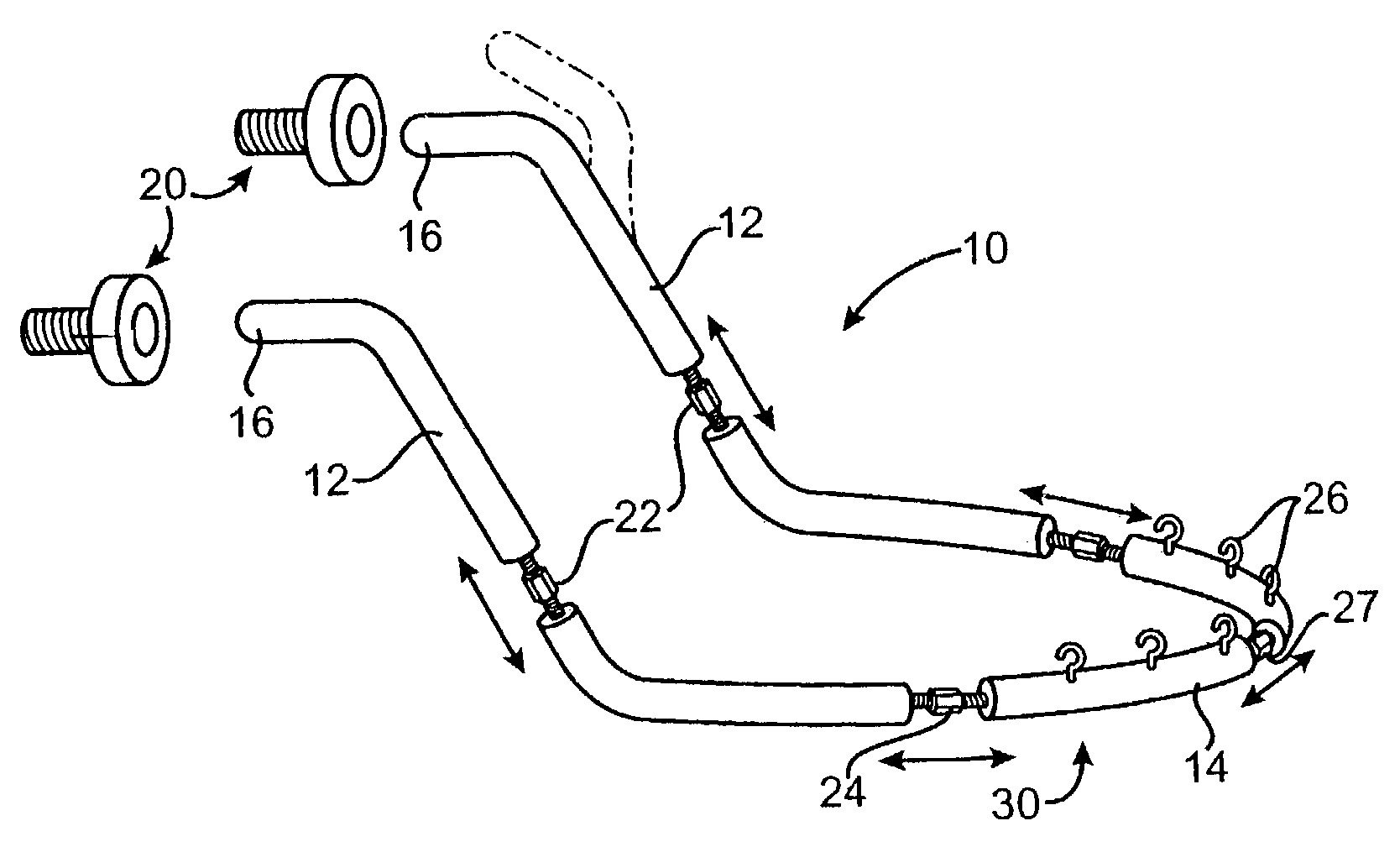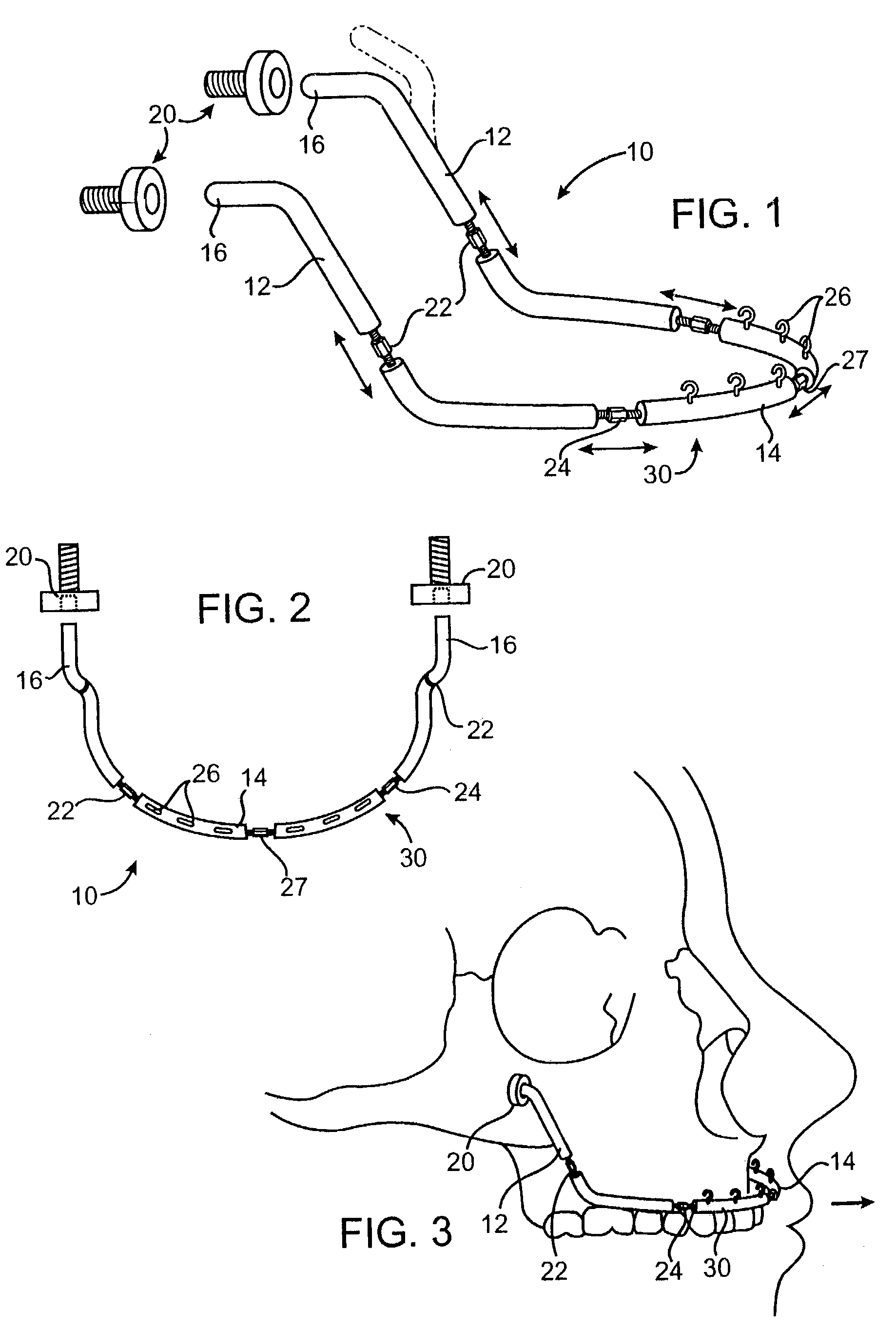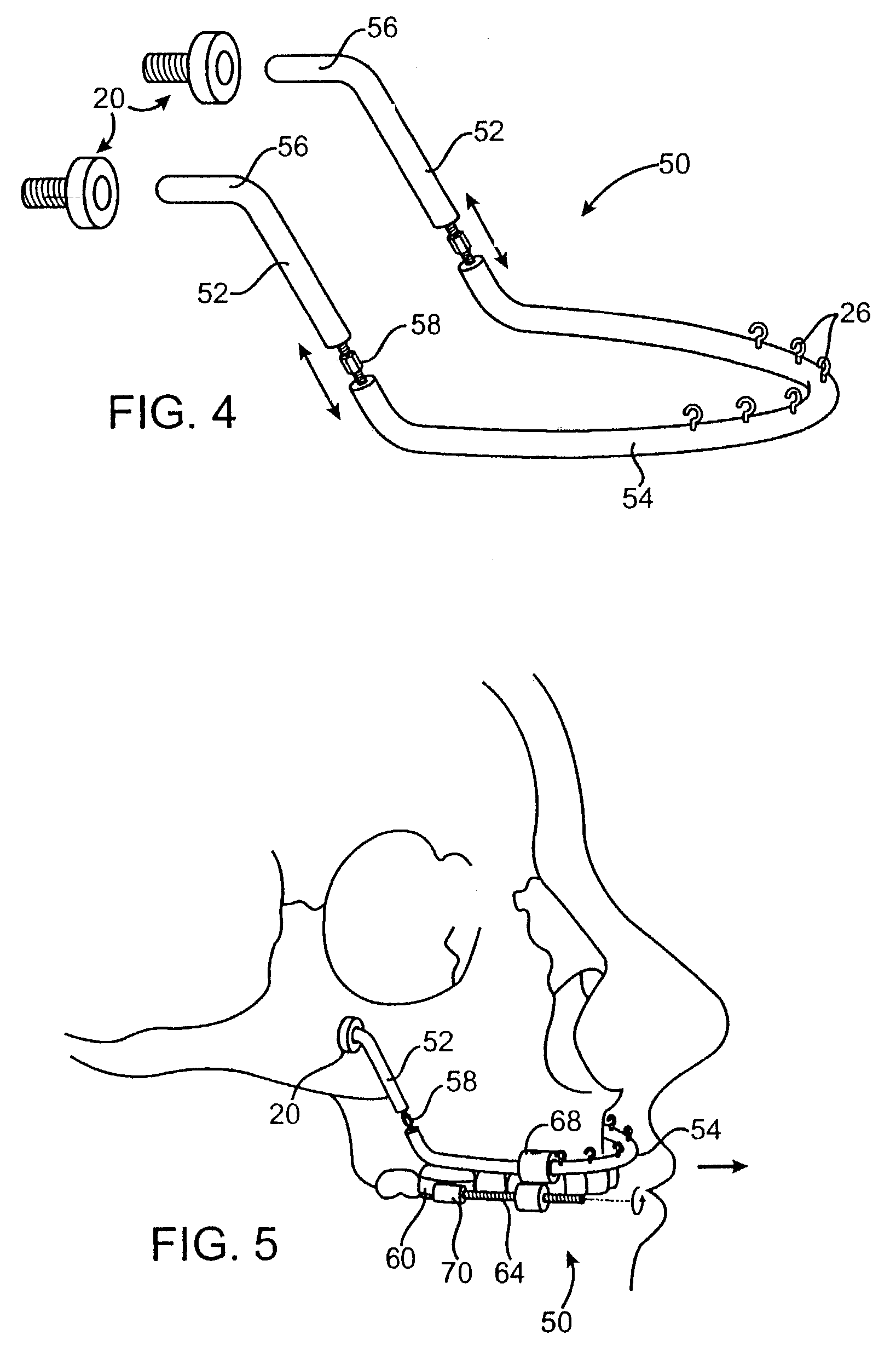Maxillary distraction device
a distraction device and maxillary bone technology, applied in the field of maxillary bone extension devices, can solve the problems of deformation, deformation, difficulty in chewing or breathing, and deformation of the maxillary bone, and achieve the effect of lengthening the maxillary bon
- Summary
- Abstract
- Description
- Claims
- Application Information
AI Technical Summary
Benefits of technology
Problems solved by technology
Method used
Image
Examples
Embodiment Construction
[0023]FIGS. 1-3 illustrate a first embodiment of a maxillary distraction device 10 for providing anterior traction on the maxilla and midface. Distraction devices, such as those shown and described herein are generally used to lengthen bones to correct abnormalities and after facial fractures and injuries. The distraction device 10 of FIG. 1 includes two anchors 20 and a facebow 30. The facebow 30 includes two generally vertical posterior legs 12 connected to opposite ends of a substantially horizontal U-shaped anterior portion 14. The posterior legs 12 each have a free end 16 which is removably connectable to the implantable anchors 20. The implantable anchors 20 are in the form of large bone screws or other implants configured to be implanted into the maxillary bones at the malar region of the skull with the free ends or heads of the screws positioned within the mouth.
[0024]The implantable anchors 20 provide a fixation of the posterior ends of the facebow 30 to the skull while the...
PUM
 Login to View More
Login to View More Abstract
Description
Claims
Application Information
 Login to View More
Login to View More - R&D
- Intellectual Property
- Life Sciences
- Materials
- Tech Scout
- Unparalleled Data Quality
- Higher Quality Content
- 60% Fewer Hallucinations
Browse by: Latest US Patents, China's latest patents, Technical Efficacy Thesaurus, Application Domain, Technology Topic, Popular Technical Reports.
© 2025 PatSnap. All rights reserved.Legal|Privacy policy|Modern Slavery Act Transparency Statement|Sitemap|About US| Contact US: help@patsnap.com



